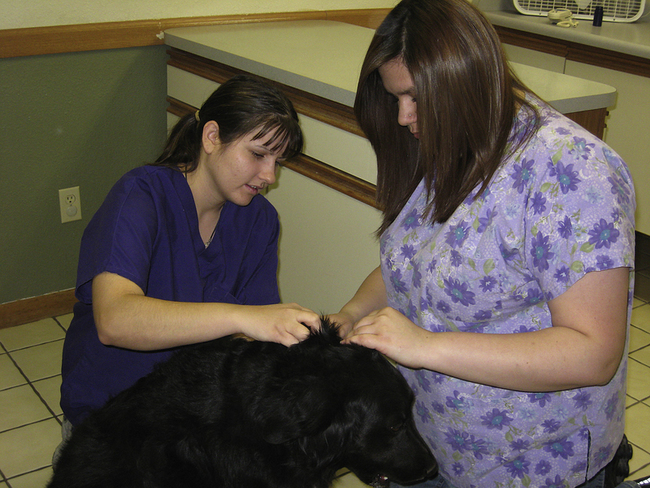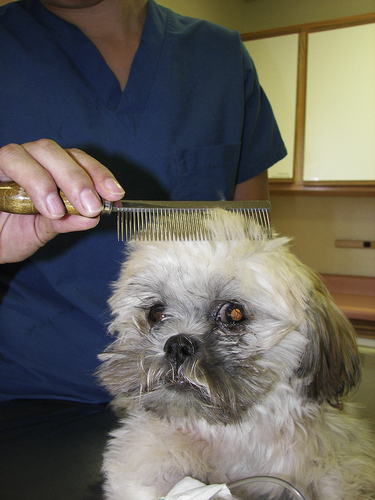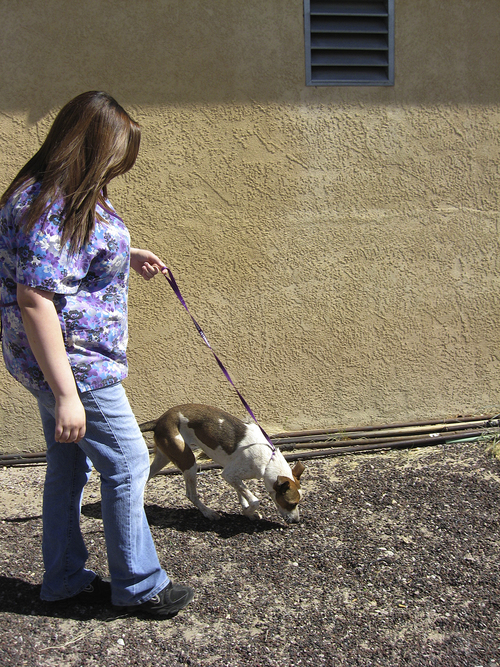CHAPTER 1

Veterinary Health Care Team Members
Mastery of the content in this chapter will enable the reader to:
• Define various positions within a veterinary practice.
• Identify courses of study to enhance the education of each position.
In-hospital patients receive care from all team members—from kennel assistants to veterinarians—and all team members are responsible for ensuring patient safety and comfort. Patients can never be left in feces and urine; they must always have access to water and food when allowed and be hospitalized in a warm, comfortable environment. Team members share responsibilities for these hospitalized patients, and all must take initiative to provide the best care, whatever their positions are in the practice (Figure 1-1). Any team member who sees a patient in a dirty cage must clean it immediately.

Each new team member must become familiar with a number of topics in each practice. Because many practices use different products and equipment or perform procedures with different methods, a list of questions has been developed that each team member should be familiar with when starting a new position (Box 1-1).
KENNEL ASSISTANTS
Kennel assistants must be able to interpret correct nutritional instructions, feed the correct diet and amount, and remove food from preoperative patients. Appropriate safety precautions should be taken when moving patients to another cage or when walking patients outdoors (Figure 1-3). This important team member reports any and all behavior and condition changes to the immediate patient supervisor (Box 1-3).
VETERINARY ASSISTANTS
Veterinary assistants are a strong asset to the team. Veterinary assistants may help a veterinary technician and/or veterinarian. They should excel at physical restraint, laboratory skills, patient care, and client relations (Box 1-4). Veterinary assistants often are key to clinics that excel in client satisfaction and patient care. Kennel assistants may report to a veterinary assistant, who in turn reports critical patient information to either a veterinary technician or veterinarian. Assistants can be trained on the job by veterinary technicians or practice managers or attend veterinary assistant classes. As the field of veterinary medicine grows, education opportunities available to team members increase as well. Programs are available at every level to help educate each staff member (Box 1-5).
VETERINARY TECHNICIANS
graduate may be considered registered, certified, or licensed or may be called an animal health technologist. Credentialed technicians are allowed to perform certain duties under the direct supervision of a veterinarian (Figure 1-4). Direct supervision is defined as having a licensed veterinarian on premises and readily available while a veterinary technician completes certain duties. These duties vary from state to state; therefore each state veterinary practice act must be evaluated individually. Credentialed technicians may be required to attend continuing education to maintain licensure; states vary regarding the minimal number of credits required (Boxes 1-6 and 1-7).


 What Would You Do/Not Do?
What Would You Do/Not Do?


